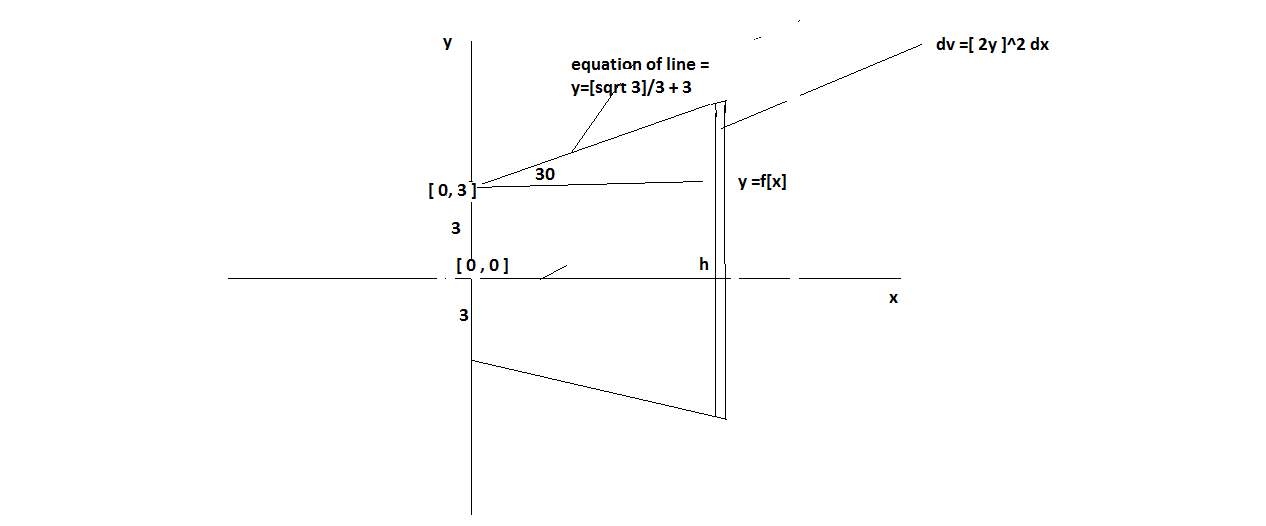A large vase has a square base of side length 6 cm, and flat sides sloping outwards at an angle of 120◦ with the base. How to find the rate when height is rising?
A large vase has a square base of side length 6 cm, and flat sides sloping outwards at an angle of 120◦ with the base. Water is flowing in at 12cm3/s.
How to find, to three significant figures, the rate at which the height of water is rising when the water has been flowing in for 3 seconds.
A large vase has a square base of side length 6 cm, and flat sides sloping outwards at an angle of 120◦ with the base. Water is flowing in at 12cm3/s.
How to find, to three significant figures, the rate at which the height of water is rising when the water has been flowing in for 3 seconds.
1 Answer
Explanation:
 From the sketch it can be seen that an element of volume
From the sketch it can be seen that an element of volume
It can be seen that the straight line along the face of the pyramid has equation
Thus volume of the frustrum of the pyramid
From the question
Therefore,
Differentiating.......
Therefore,

